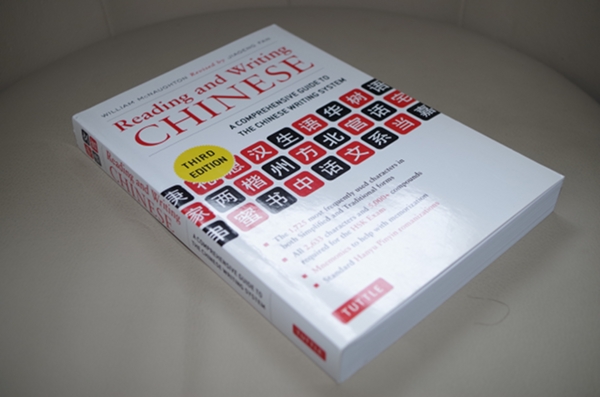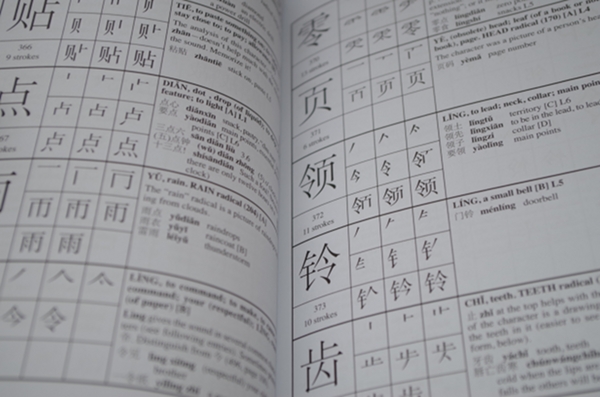So some of you may be wondering how my Chinese lessons are going. Well, I have yet to start them this semester. It’s hard to believe that it’s already nearing the end of April and I haven’t taken a class yet. Whether it was sickness or meetings, we just haven’t arranged to get together yet. But it’s not like I haven’t been studying and slowly chipping away at the language.
First, however, I believe I will cut down the number of tutoring hours I take from three hours to one and a half hours. One of the reasons for the reduction is that both of my teachers increased their hourly rates. Last semester I paid 70 RMB to one teacher and 100 to another. Well those are now 80 and 120 RMB, respectively. That’s about $15 to $23 CAD an hour for Chinese lessons. The second reason is that my increased workload this semester doesn’t leave very much flexibility in my and my teachers’ schedules. The third reason, I hope, is that I’ve been picking away at the characters by way of an electronic dictionary I have on my phone. My writing ability has increased substantially so now it’s not so difficult to use a finger to write in a character. Sometimes it takes a couple of tries but usually I’m able to get it. So this has helped me a little bit.
I remember debating with another teacher (who is fluent in Chinese) that there was no way to actually figure out the sound of a Chinese character without being told first. That is to say, unlike English where you can piece together the sound and pronunciation of a word based on your knowledge of the alphabet, there is no real way to do that with Chinese. There are, however, a few different types of Chinese characters (which I’d love to explain but I don’t think I’d do a very good job of it at the moment) and, recently, I’ve begun to recognize one set of them. The set I’ve begun to recognize is known as the character with another “tone character” beside it. So, since I know 会 is hui, “will”, I can figure out that this character, 绘, is also hui. So too with 马 ma, I can also figure out that 玛 is also ma. But again, no idea about the tone or its meaning.
(*会 huì means “meeting” but is also used to denote something in the future, such as “I will go”, 我会去 wǒ huì qù. The character uses the fourth/ falling tone. The second character, 绘, means “painting” and also uses the fourth / falling tone, huì. So, their meaning often depends on context. Next, 马 mǎ “horse”, has a third / dipping tone while 玛 mǎ is a transliteration of the English sound “ma”, as in “Mary”.)
But those are relatively easy to pick out. Reading Chinese gets tricky, however, when the tonal character changes the tone and the meaning completely, such as 里, 理, 厘, 哩, and, just to make things fun, 童. Those characters, respectively, are lǐ “inside”, lǐ “principle, reason”, lí “a fraction of something”, lī (the sound value of “lee”), and… tóng “child”. All of them have the same base character but each has a different radical beside it thus changing the tone of the word. Further, the last one I would probably read as li and get it wrong because, as you can see, although the character has the same base character, the radical above it has changed the pronunciation completely.
So this is a very small step in the right direction for reading Chinese, but I understand I still have quite a bit more to go.
Ah, and in a classic example of knowing the sound of a word but not knowing its character, I managed to call that Japanese girl I met in Hong Kong a “hungry foolish person” instead of what I wanted to say, “Japanese person”. The reason for this mistake is because I thought the word for “Japan person” was ri which a lot of times sounds like e “hungry”. Meanwhile, ben “original, native” sounds similar to ben “fool”, but the characters are different: 本 běn is “original, native” but 苯běn is fool. Put them together and I called this girl 饿苯 “hungry fool” and not 日本 “Japanese”. Oh ha ha, chortle chortle ell oh ell. Well, her English was good enough to tell me where to go before she corrected my mistake.
Finally, I mentioned I have been picking away at the language. I recently purchased a copy of William McNaughton’s Reading and Writing Chinese 3rd edition and also loaded Baidu’s dictionary APP “Fanyi” onto my phone. The book is a lengthy tome with about 6,000 characters listed in it, including their tones, stroke order, meanings and other similar words. The dictionary APP is quite neat because it also has a picture and text translator, so I can take a picture, circle an object, and it will give me a translation for it. However, it doesn’t do well with “busy” photos as sometimes it will give some pretty bad translations.
Overall, I can carry on a basic conversation. I can say that my speaking is better than my listening/understanding. I can say what I want but I hope that my fellow interlocutor doesn’t stray from the simple, textbook scripts for if they do… then I’m lost. I should be starting Chinese lessons in May and so that should keep me busy until the summer.

